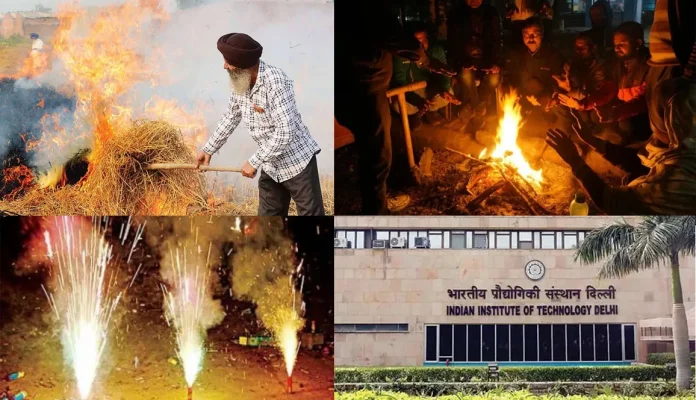A study by IIT-Delhi on the causes of Delhi’s air pollution has found that biomass emissions have a greater impact on the quality of air than the Diwali firecrackers, as popularly believed.
Busting Myths: The Study titled ‘Chemical speciation and source apportionment of ambient PM2.5’ has busted the myth that bursting Diwali firecrackers leads to increased levels of air pollution, affecting the air quality for a long period of time.
By Swarajya Staff
It points out that the level of metallic elements generated by firecrackers does rise to 95 per cent of the total elemental PM2.5 during Diwali. However, the study found this rise to be transient. The peak concentration observed around midnight plummets to around one-third by the following day.
Delhi has encountered serious haze events following Diwali in recent years, which the study finds to be due to biomass burning emissions rather than the fireworks. The study underlines the fact that the carcinogenic/non-carcinogenic health risks associated with emissions are primarily based on prolonged exposures to ambient pollutant levels.
Firework emissions, even if high, last only a few hours, limiting their exposure and long-term health risks.
Reason Behind the Spike: The study observes that the October to November period in India coincides with the crop harvesting season in northern India and witnesses a rise in biomass and stubble burning events. The effect of which was seen during the entire period of the research, i.e. from 20 October 2019 to 31 October 2019, with the Diwali festival falling on 27 October 2019.
During the study, they observed that the concentration of particulate matter rises from 6pm until early morning, stemming from increased emissions from stubble burning events at night, and increased use of domestic biomass for heating purposes due to the cold weather, among other atmospheric conditions.
The study found that biomass burning-related emissions rise steeply in the days following Diwali, with average levels rising by a factor of two compared to pre-Diwali levels.
This is the first study to isolate the impact of fireworks on ambient PM2.5 levels and to delineate the potential impact of firecracker burning and the subsequent stubble burning events on the aerosol levels following Diwali night.
The researchers, with their findings, aim to help lawmakers formulate more informed policies to control and alleviate air pollution in the national capital.
This article first appeared in www.swarajyamag.com and it belongs to them.












